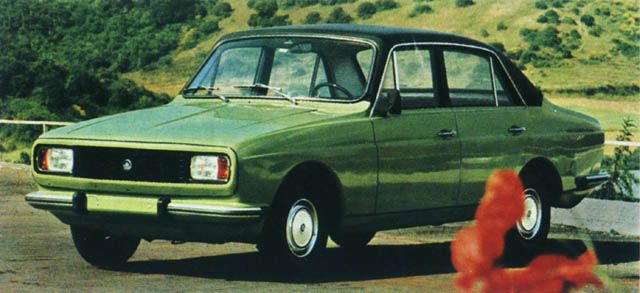The late 1970s marked a pivotal moment in automotive history when emerging markets began establishing their domestic manufacturing capabilities. Among these ambitious ventures, the Anadol SL 1978 stood as a bold statement of Turkey’s industrial aspirations, combining local engineering talent with proven international technology.
In an era dominated by European and American automotive giants, Turkey’s determination to create its own automotive identity manifested in this remarkable vehicle. The Anadol SL wasn’t just another car – it represented a nation’s dream of industrial self-sufficiency and technological advancement.
Info!
The Anadol SL represents more than just a car – it marked Turkey's first serious venture into domestic automobile production, challenging the established automotive hierarchy of the 1970s.
The Birth of Turkish Automotive Dreams
The story begins with visionary industrialist Vehbi Koç, who established Anadol on December 19, 1966. This venture marked Turkey’s first serious attempt at creating a domestic automotive brand, setting the stage for an industrial revolution that would reshape the nation’s manufacturing landscape.
The collaboration with Ford proved instrumental in bringing technical expertise to the project. While the Crossflow engine came from Ford’s proven lineup, everything else – from body design to suspension tuning – represented Turkish engineering ingenuity.
“The Anadol SL wasn’t just about transportation – it was about proving that Turkey could compete in the global automotive arena. Every car that rolled off the production line carried the weight of national pride,” recalls Ibrahim Yilmaz, a veteran automotive journalist who covered the industry during the 1970s.
The production run from 1973 to 1978 saw continuous refinements and improvements. Each iteration brought subtle enhancements to reliability and comfort, reflecting the growing expertise of Turkish automotive engineers.
Historical Reference!
The 1972 facelift marked a significant turning point, aligning the vehicle's aesthetics with contemporary European design trends while maintaining its unique Turkish character.
Engineering and Design Philosophy
At the heart of the Anadol SL sat the reliable Ford Crossflow 1.3-liter engine, delivering 54 horsepower through a proven carbureted fuel system. While modest by today’s standards, this powerplant offered an ideal balance of performance and efficiency for 1970s urban mobility.
The vehicle’s dimensions – 4440mm length, 1645mm width, and 1420mm height – created a compact yet practical package. These proportions enabled confident city navigation while providing comfortable interior space for five occupants.
“The engineering team made brilliant use of available resources. They understood that reliability and serviceability were more important than outright performance for their target market,” explains Dr. Mehmet Aydin, automotive engineering historian at Istanbul Technical University.
Suspension design prioritized comfort over sportiness, acknowledging the varied road conditions of 1970s Turkey. The body construction utilized contemporary materials and manufacturing techniques, balancing durability with production efficiency.
Key technical features worth noting:
- spark ignition system optimized for local fuel quality;
- carburetor tuned for reliability over peak performance;
- robust suspension system designed for demanding road conditions;
- serviceability-focused engine bay layout;
- locally-sourced interior materials selected for durability.
These engineering choices reflected a deep understanding of market needs and operating conditions.
Living with the Anadol SL
Daily operation of the Anadol SL revealed its thoughtful design philosophy. The controls fell naturally to hand, visibility exceeded contemporary standards, and the trunk accommodated generous cargo loads.
Maintenance requirements aligned with local service capabilities. Most mechanical components proved accessible for routine service, while the Ford-sourced engine ensured parts availability through established supply chains.
Fact!
Many Anadol SL owners report exceeding 200,000 kilometers on original engines, testament to the robust engineering and quality of assembly.
“My father’s Anadol served our family for fifteen years without major issues. It started every morning, handled our weekend trips reliably, and never left us stranded,” shares Ahmet Kaya, whose family purchased their SL new in 1978.
The car’s market positioning hit a sweet spot – affordable enough for middle-class families yet sufficiently refined to serve as a proud possession. This balance contributed significantly to its market success and lasting reputation.
Legacy and Collector Status
Today, surviving Anadol SL examples command increasing attention from collectors and automotive historians. Their significance extends beyond mere transportation – they represent a crucial chapter in Turkish industrial development.
Preservation efforts face unique challenges. While mechanical components remain serviceable through Ford’s heritage network, body panels and interior pieces require specialist restoration expertise.
The collector community has evolved into a passionate network of enthusiasts. Regular meetings and events celebrate these vehicles, sharing maintenance knowledge and restoration techniques across generations.
Market values continue trending upward, particularly for well-preserved examples. Serious collectors recognize the Anadol SL’s historical importance, driving demand for investment-grade vehicles.
Beyond the Horizon
The Anadol SL’s legacy extends far beyond its production numbers. It demonstrated Turkey’s capability to develop and manufacture sophisticated consumer products, paving the way for future industrial ventures.
Looking back, the Anadol project’s true success lies not in sales figures or performance statistics, but in its role as a catalyst for Turkish industrial development. It proved that with vision, determination, and strategic partnerships, emerging markets could establish sophisticated manufacturing capabilities.
| Pros | Cons |
|---|---|
| Historical significance as Turkey’s first domestic car | Limited power output by modern standards |
| Robust Ford-sourced engine with proven reliability | Parts scarcity for body and interior components |
| Practical dimensions for urban use | Basic suspension technology |
| Strong collector value potential | Rust-prone in certain areas |
| Easy mechanical maintenance | Limited performance compared to European competitors |
| Cultural importance in Turkish automotive history | Relatively small production numbers |
| Strong enthusiast community support | Restoration requires specialist knowledge |
The Anadol SL 1978 represents more than just transportation – it embodies a nation’s industrial awakening. While its specifications might seem modest by contemporary standards, its impact on Turkish manufacturing capability and industrial confidence proved immeasurable. For collectors and enthusiasts, it remains a fascinating artifact of automotive history, combining practical engineering with cultural significance.

